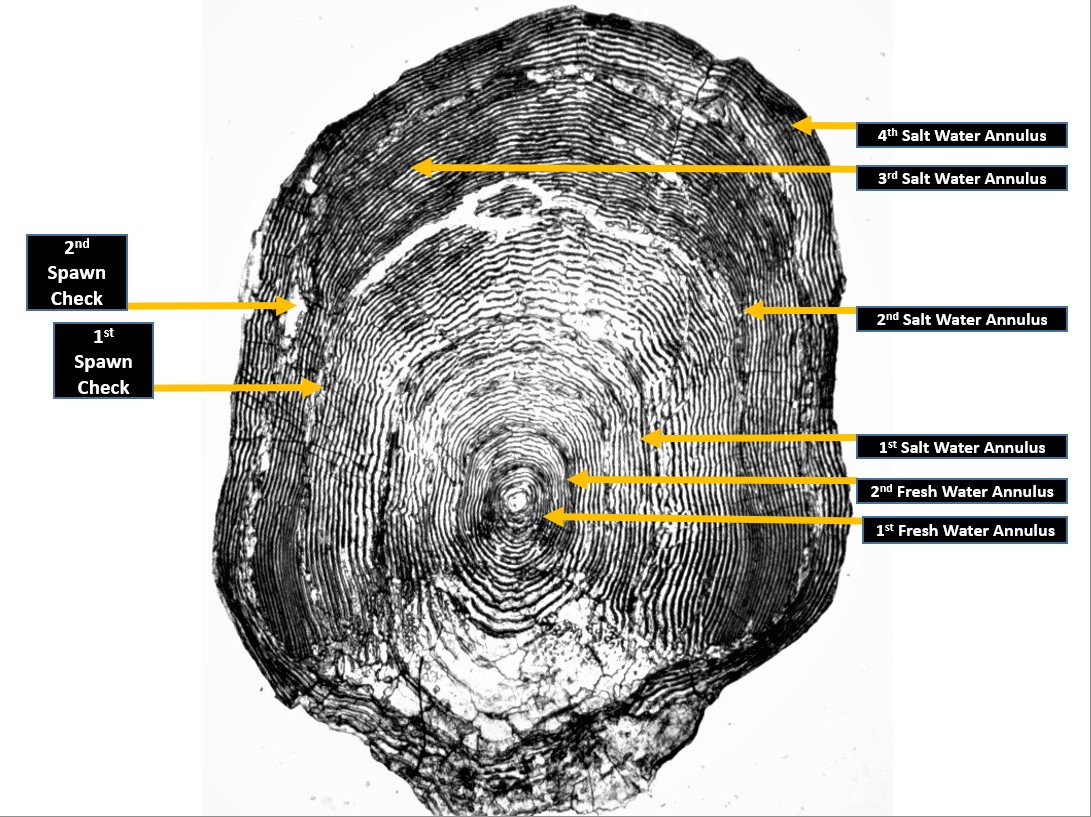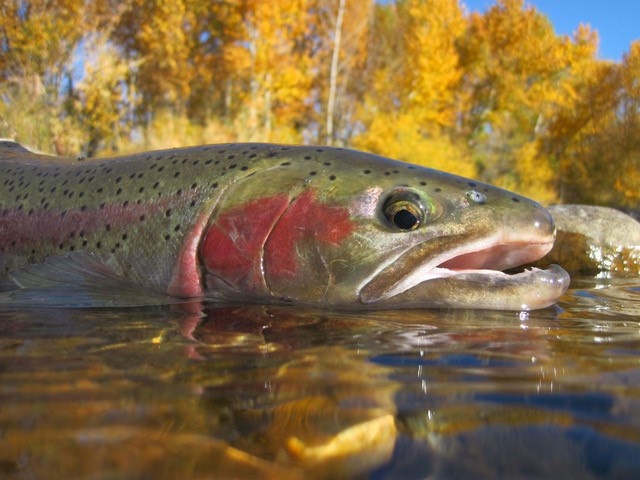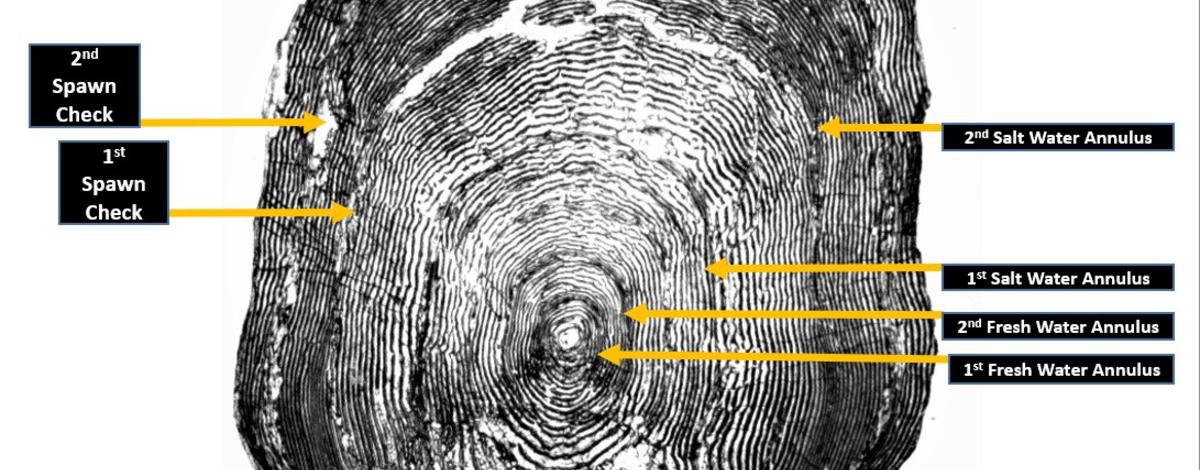Steelhead trout returning to Idaho waters to spawn are long lived relative to other anadromous salmonids. Every year, Idaho Fish and Game collects scale samples from steelhead and salmon passing Lower Granite Dam to determine their ages. Scales can tell us more than just how old a fish is, however, they can also indicate if and how many times a fish has spawned. A spawning steelhead will absorb some of the nutrients from its scales to use for growing reproductive structures. This shows up as a scarring ring on the scale, known as a spawn check. Sometimes, fish that we collect scales from are also tagged with a Passive Integrated Transponder (PIT tag). This can happen when they are juveniles, or when they are adults, and it can add to the information we gather from the scales, giving us an even more complete look into the fascinating life history of these incredibly resilient and adaptive fish.
In 2018, we collected a scale from a steelhead that we estimated to be 8 years total age.

This is the oldest scale collected at Lower Granite Dam to date. This fish was also implanted with a PIT tag at the time the scale was taken, so that we could follow its path throughout the river system. Based on length measurements and genetic information, we know that this was a small female measuring 66 centimeters when she was tagged. With the scale and tag, we can begin to tell this fishes story, which goes something like this:
This fish hatched out of her nest (redd) in the summer of 2010. She stayed there until 2012, when she swam downstream to the ocean. She spent 2 years feeding far out in the Pacific Ocean, before returning to her native stream in the fall of 2014 where she spawned the following spring. Having survived spawning, she returned to the Pacific Ocean to spend another year feeding. She journeyed to fresh water again in fall 2016 to spawn the next spring. Having survived spawning once more, she repeated the round trip journey to the ocean again, before returning in fall 2018, where she was captured at the Lower Granite Dam adult fish trapping facility. Here she was injected with a PIT tag prior to being released to rejoin the run. Trap tenders noticed that this fish suffered and survived a seal bite prior to being captured in the adult trap. Although her capture and release at the trap was the last time she was physically counted or sampled, the PIT tag that was implanted shows us more of her story. She was detected at Little Goose Dam Juvenile Bypass in the spring of 2019 moving downstream. Four months later she was detected moving upstream at Bonneville Dam, followed by a detection at Lower Granite Dam 2 months after that. This is evidence that this fish survived spawning in 2019 and was on her way to spawn yet again that following spring.
All totaled, this little female steelhead likely swam at least 4,000 river miles over its lifetime, which is over a tenth of the way around the planet, not including miles swam in the ocean. She swam past eight dams each spawning run for a total of 32 successful dam passages. She dug at least 3 redds and laid at least 9,000 eggs. Let’s hope her offspring turn out half as tough as she was.

Read the latest news and information about wild fish in Idaho on our Wild Salmon and Steelhead pages at https://idfg.idaho.gov/fish/wild.

